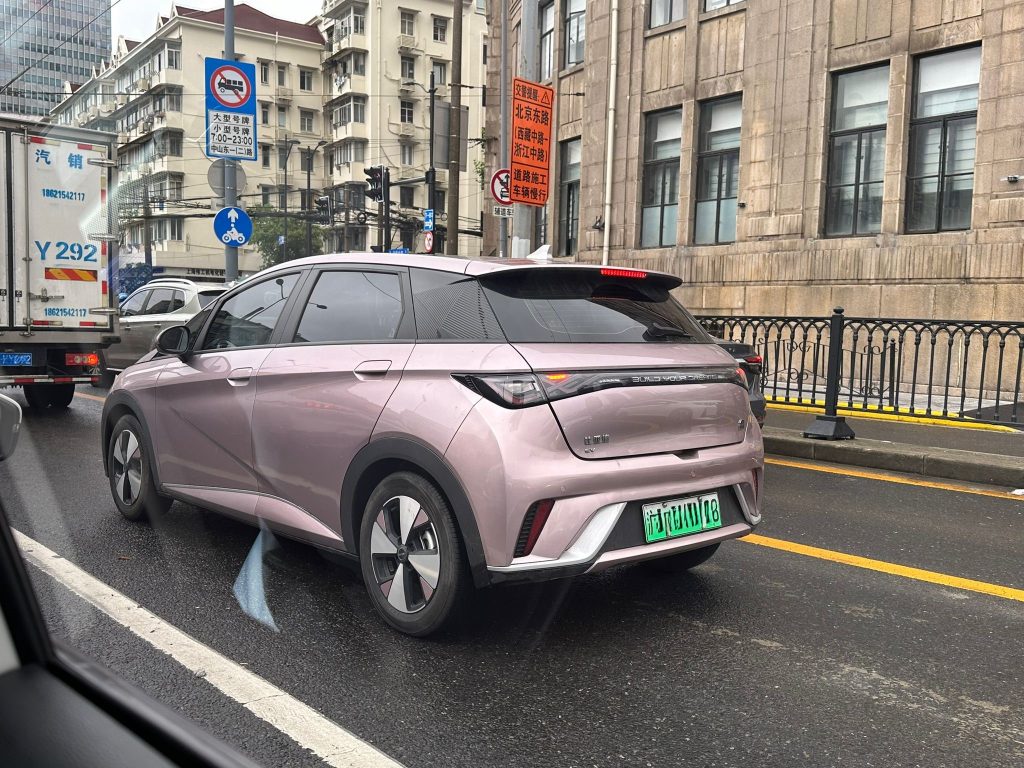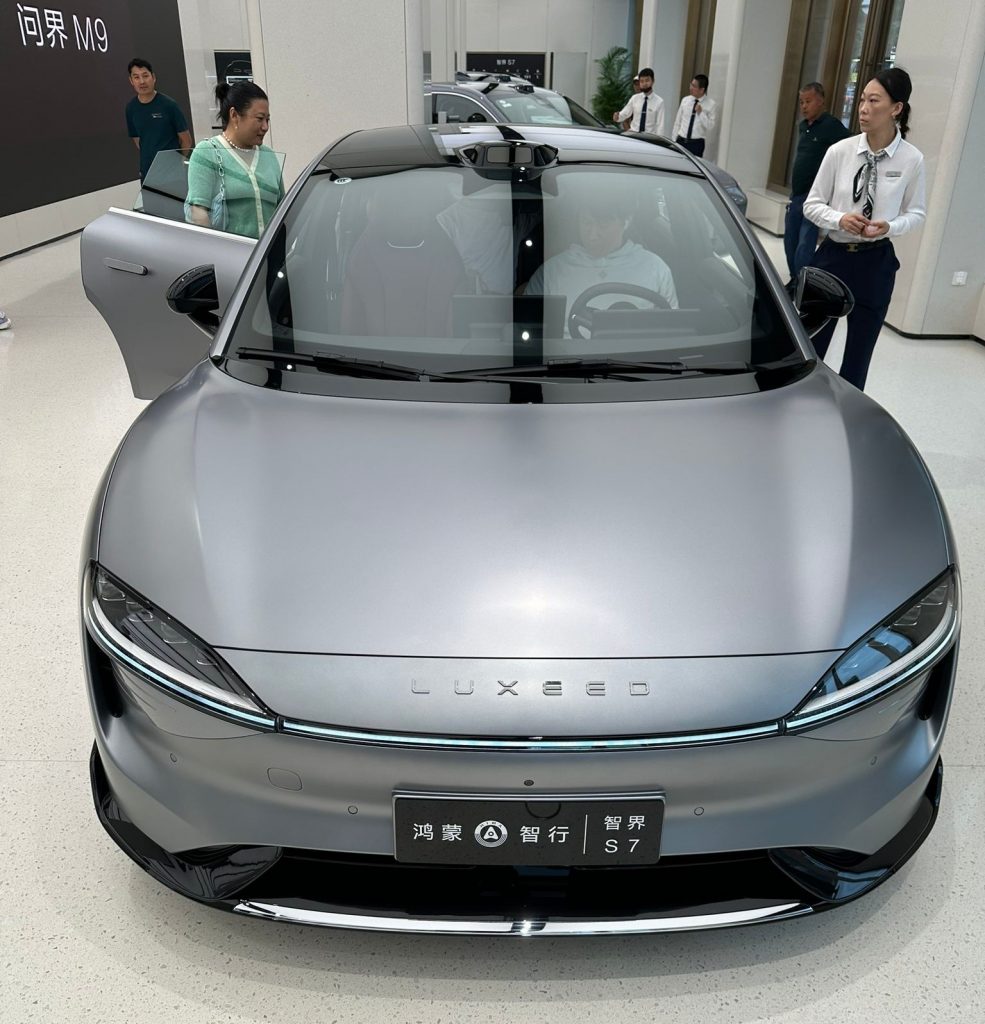China’s New Energy Vehicle Revolution Reaches the Tipping Point: EV Market Share Hits 47%
May 2024 witnessed the highest penetration rate of new NEV sales in China, with 783,289 sold, achieving a notable 47% market share.
The Rise of New Energy Vehicles in China
China’s commitment to sustainable transportation has reached a significant milestone, with new energy vehicles (NEVs) now making up 47% of vehicle sales. This substantial growth highlights China’s leadership in adopting low-carbon transportation solutions, far outpacing the efforts seen in many Western countries and rapidly catching up to Norway (>90%) and Sweden.
Government Policies and Incentives
China’s burgeoning new energy vehicle (NEV) market is fueled by strategic government policies, technological advancements, and rising consumer demand for domestic Chinese vehicle brands (Lin 2024). To kick-start the market, the Chinese government instituted generous subsidies and tax incentives, making NEVs more affordable for buyers. 2023 marked the first year without national subsidies for EV purchases (Yu Shan 2022), though tax exemptions and non-financial support remain. Strict emissions regulations and production quotas further drive NEV adoption (Leplâtre, 2023).
China’s New Energy Infrastructure Development
Infrastructure development has significantly contributed to this growth (Xinhua 2024). An expanding network of charging stations and battery swap stations (2400+) has made owning an NEV more convenient. Technological advancements in battery technology have led to longer ranges and shorter charging times, making NEVs a viable alternative.
Consumer Awareness and Economic Factors
Consumer awareness of environmental issues and the urgent need to improve urban air quality have increased demand for NEVs (Fan et al. 2020). Economic factors such as rising fuel costs and higher incomes have also contributed to this shift. Strong domestic manufacturers like Geely, BYD, Tesla, XPeng, Li Auto and NIO are leading NEV innovation, solidifying China’s position as a global leader in sustainable transportation.

“Green Plate” vs. “Blue Plate”
Purchasing a vehicle is only one step towards driving a car in China; obtaining the license plate is another crucial step. In many large Chinese cities, a “Blue Plate,” required for ordinary gasoline or diesel vehicles, can cost upwards of $50,000 (350,000 CNY). In contrast, the “Green Plate” for New Energy Vehicles (NEVs) is relatively inexpensive, sometimes costing just one-tenth of the Blue Plate. The combination of lower operating costs, reduced licensing costs, and comparable or lower capital costs makes NEVs the logical choice for almost all vehicle consumers in China. The rate of adoption reflects this practicality, with more consumers opting for NEVs over traditional vehicles (Dixon 2017).
China’s New Energy Vehicle Sales Volume
The sales volume of new energy vehicles (NEVs) in China has grown exponentially over the past decade (Wang 2024). In 2013, 11,561 NEVs were sold. By 2023, this number had surged to 7,272,278 units, highlighting the rapid shift towards sustainable transportation in China. A significant surge in NEV sales occurred in recent years, with sales jumping from 2,905,047 units in 2021 to 7,272,278 units in 2023, a 250% increase in just 2 years. This trend reflects the growing consumer preference for environmentally friendly vehicles and a supportive regulatory environment. By mid-2024, NEV sales had already reached 3,203,032 units, indicating that the market continues to expand rapidly.
Month-by-month data for 2023 further illustrates this growth. January saw 659,178 NEVs sold, accounting for 30.7% of total passenger car sales. February recorded 371,118 NEVs sold, bringing the penetration rate to 34.5%. March saw 704,646 NEVs sold, reaching a penetration rate of 45.7%. April maintained high sales with 684,801 NEVs sold, resulting in a 45.2% penetration rate. May witnessed the highest penetration rate in the dataset, with 783,289 NEVs sold, achieving a notable 47.0%. These figures underscore the robust and continuous growth of NEV sales in China.

Photo Credit: James White, Carbon Critical
China’s New Energy Vehicles Penetration Rate
China’s new energy vehicle pentration rate has steadily increased from 2013 to mid-2024. Starting at 0.1% in 2013, the rate climbed to 40.3% by mid-2024, signifying broader acceptance and integration of NEVs within the automotive market. Key milestones in NEV adoption in China include a penetration rate of 14.2% in 2021, increasing to 26.3% in 2022, and reaching 34.5% by 2023, showcasing rapid adoption. The first half of 2024 continues this trend, with the penetration rate reaching 40.3% by mid-year and likely to exceed 50% by year-end 2024, indicating strong consumer preference for cleaner, more sustainable transportation.
A Pioneering Path to Sustainable Transportation
China’s journey towards sustainable transportation showcases how strategic policies, infrastructure development, and technological advancements can transform markets. With NEVs now making up nearly half of all vehicle sales, China has positioned itself as a global leader in low-carbon transportation solutions. The significant growth in NEV sales, driven not by government incentives, but by lower operating cost, acquisition cost parity, lower licensing costs and expanding charging infrastructure, as well as rising consumer awareness, has resulted in a strong and sustainable shift in favor of environmentally friendly vehicles. This growth reflects not only increased sales but also a broader societal commitment to reducing carbon emissions and improving urban air quality. As China continues to innovate and lead in the NEV sector, it sets a powerful example for other nations in the global pursuit of sustainable transportation.
James White PhD and Joseph Moniodis PhD | 10th August 2024
Citation: James White and Joseph Moniodis. 2024. “China’s New Energy Vehicle Revolution Reaches the Tipping Point: EV Market Share Hits 47%.” Carbon Critical. https://carbon-critical.com/chinas-new-energy-vehicle-market-share-hits-47/
References
Dixon, Tim. 2017. ‘China Green Licence Plate Scheme Going National’. CleanTechnica. 10 December 2017. https://cleantechnica.com/2017/12/10/china-green-licence-plate-scheme-going-national/.
Fan, Jing-Li, Qian Wang, Lin Yang, Hua Zhang, and Xian Zhang. 2020. ‘Determinant Changes of Consumer Preference for NEVs in China: A Comparison between 2012 and 2017 – ScienceDirect’. 2020. https://www.sciencedirect.com/science/article/abs/pii/S0360319920321352.
Leplâtre, Simon. 2023. ‘How China Became an Electric Car Giant’, 30 September 2023. https://www.lemonde.fr/en/economy/article/2023/09/30/how-china-became-an-electric-car-giant_6141985_19.html.
Lin, Chengyi. 2024. ‘3 Drivers of China’s Booming Electric Vehicle Market’. Harvard Business Review, 3 January 2024. https://hbr.org/2024/01/3-drivers-of-chinas-booming-electric-vehicle-market.
Wang, D. 2024. ‘Geely Radar’.
Xinhua. 2024. ‘China’s EV Charging Infrastructure Sees Robust Growth in Q1’. 2024. https://english.www.gov.cn/archive/statistics/202404/14/content_WS661b714fc6d0868f4e8e608b.html.
Yu Shan. 2022. ‘Notice on the Promotion and Application of Financial Subsidy Policies for New Energy Vehicles in 2022_Departmental Documents of the State Council_Chinese Government Website’. 2022. https://www.gov.cn/zhengce/zhengceku/2021-12/31/content_5665857.htm.
